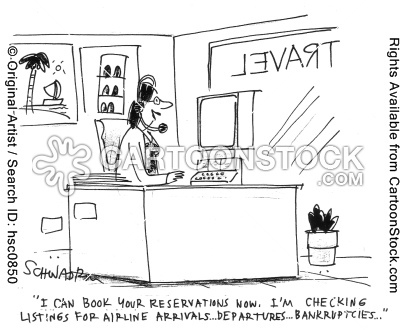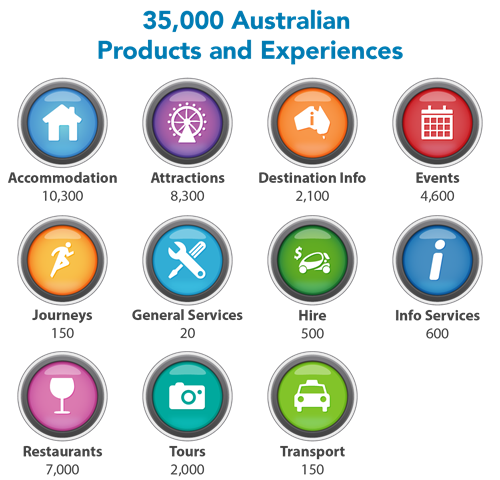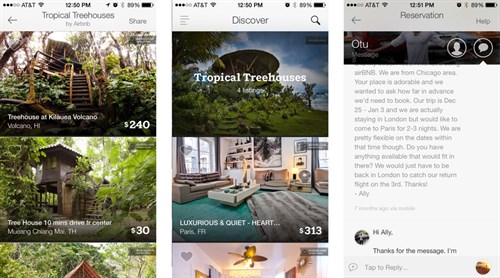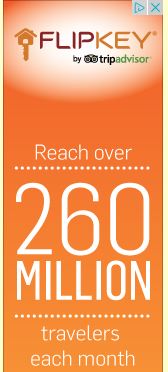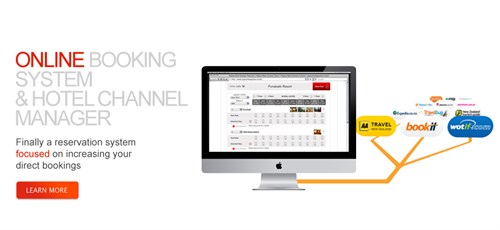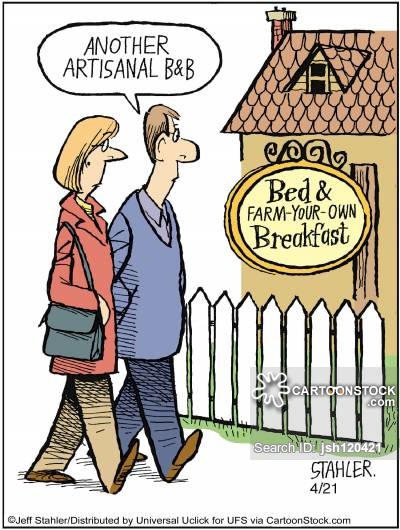Understanding Online Distribution
What will I learn?
- To work out which distribution options make sense for my business..
- There are many distribution channels I can use to promote my business. For instance, I could consider working with visitor information centres, many of which now offer customers real-time bookings, and support the last minute purchases of your tourism products and services.
- To keep a watching eye on new competitive products and services available in my local area through the new breed of online distributors.
- One of the most effective ways to get my product to many online distributors is to use channel managers.
1. Traditional vs. Online Distribution
Distribution means making sure that your product or service information reaches consumers. It is not a tourism-specific concept; all goods regardless of their origin require distribution to their target market.
In recent years, the Internet has further redefined the distribution of travel products. The industry now talks about online distribution (which requires the use of the Internet) and traditional distribution (which doesn’t require the use of the Internet). In tourism, we often refer to distribution as the places people can book and purchase your product.
a) Not all distributors are equal
Consumers generally expect to pay less if they buy products directly from the producer rather than through a retailer. For instance, most consumers expect apples will be cheapest at the farm gate, a little dearer at a supermarket chain that buys in bulk and a little dearer again at a local shop.
And while consumers’ expectations of tourism product shouldn’t be any different, travellers can become upset if they pay more for a room buying it at place A instead of place B. Critically, stand by rates should not be advertised on street signs outside your business as this is broadcasting to the traveller that they could have gotten a cheaper price!
b) What are distribution channels?
You may have heard the term distribution channel. A channel is simply a mechanism by which your product reaches the consumer.
Examples include:
Offline:
- Visitor Information Centres
- Your own booking desk
- Other local booking desks
- Phone calls
- Retail Travel Agents
Online:
- Local Tourism Association websites (LTAs)
- Regional Tourism Association websites (RTAs)
- Some State Tourism Organisation websites (STOs)
- Online Travel Agents (OTAs) websites
- Your own website
- Emails,
- Social media booking buttons
- Global distribution systems (GDS)
- Wholesalers
- Inbound tour operators
- Aggregators (like Tripadvisor that pulls inventory from other distributors).
- Tourism Exchange Australia (TXA):
Many distributors utilise the Australian Tourism Data Warehouse for access to tourism products and services to support their businesses content collection needs. The ATDW is the only nation-wide tourism database of its kind in Australia and the world, and has proved to be a valuable platform to help tourism operators across Australia to reach more consumers through the ATDW distribution network and generate more leads to their business.
The ATDW has a distribution network of over 120 websites, and mobile applications publishing tourism products listed in ATDW have been seen over 74 million times by consumers in 2014.
Source: www.atdw.com.au
You may now want to compile a list of your target distributors to use in analysing the cost of booking in the “Developing a distribution strategy” tutorial.
2. So what is online distribution?
Traditional and online distribution channels are converging. Consumers are using the Internet more and more to access information and book tourism products. They may research online and book offline, or vice versa. Either way, the use of the Internet to research and book holidays is growing every day. Therefore your online presence needs to be broad, professional and engaging.
There are several options available to distribute your products online.
First of all, we should point out that this tutorial will not talk about your own website as an online distribution channel (important though it is!) but will focus on using third-party online distributors to distribute your live inventory.
Online distributors are tourism entities or businesses whose objective is to represent and sell products and services from many individual tourism businesses through their website, shop fronts, and/or database.
In the case of distributors who sell directly to consumers, they will present these products and services to the travel consumer who will be able to:
- see the real-time availability of each tourism product
- book online directly on the distributor website.
Because online distributors generally have a broader online presence than your own website, they often list higher than you on search engine rankings for the main blockbuster keywords such as accommodation Gold Coast for instance. It is therefore important to ensure that your product is available to be booked via the key online distributors for your target market so long as you are not paying a ridiculous cost of booking when compared to the net revenue earned. You can only do this by analysing your existing distribution channels and forecasting possible sales through new distribution channels. Above all be responsive to changes in the market and keep analysing your distributor’s performance. Analysing distributor performance is explained in in Tutorial 39, Online Distribution Advanced.
a) Website distributors (consumer-facing website)
These are the online distributors you are probably most familiar with. They have a website that allows consumers to buy your tourism product online, and they will often have the lowest cost of booking, due to their lower operating overheads.
E.g. Expedia.com, Booking.com, Wotif.com
b) Shop front distributors
These are perhaps not as well-known as online distributors but are valuable in the selling of your tourism products. They are every bit as sophisticated as the website distributors in collecting your inventory availability and selling it in real time, but the technology facilitates the screen of a consultant who then uses this information to assist a consumer who is in their shop. These distributors can demand a higher commission level, but they will often be dealing with last minute customers that would otherwise not book your tourism product.
E.g. Kangaroo Island Visitor Information Centre
c) Wholesale and Inbound distributors
These distributors have been an important part of the tourism industry for a long time and in the age of digital marketing they still play an important part in potentially delivering customers to your business. Many wholesalers now have the technology to receive your inventory, availability and booking capability in real time and can then pass this onto retail travel agents, website distributors and in some cases even other wholesalers or inbound tour operators. Whilst wholesaler and inbound commissions are generally higher than other distribution channels as they include retail travel agent commissions they can be an important part of any tourism business distribution strategy.
Many wholesale and inbound distributors also have consumer direct opportunities and will offer variable commission scale depending upon the booking channel.
E.g. DiscoverWest Holidays
d) Global Distribution System (GDS)
You may have heard travel agents talk about systems such as Amadeus, Galileo, Sabre, and Worldspan. These are known as GDS or Global Distribution Systems. They were introduced about 40 years ago and are owned and operated internationally by major airlines, car rental companies, and hotel groups. These systems distribute your product to travel agents and transport companies such as car rentals and airlines around the world. If you are a medium to large tourism business and the international market is a significant component of your business then using either your Property Management System (PMS) or your channel manager to send inventory through to these networks may be appropriate for you.
e) The new breed of online distributors
Airbnb
New marketplace players such as Airbnb are challenging the traditional tourism distribution networks with a doubled edged attack. Homeowners that could never have used traditional distribution networks are now marketing their properties in the cities and towns all around Australia. These short-term rental options are diluting the marketplace with quite competitive offerings and tourism operators need to carefully consider whether they should utitlise these same channels and also keep an eye on competitors products offered in their local area.
Airbnb was founded in August of 2008 and based in San Francisco, California, Airbnb is a community marketplace for people to list, discover, and book unique accommodations around the world online or from a mobile phone.
HotelsCombined.com
HotelsCombined.com has partnered with all the most visited travel websites to build the world’s largest hotel price comparison search engine. HotelsCombined.com searches the travel websites listed below in real-time to show travellers availability and the optimal hotel deal, then travellers click directly through to partner websites to book.
Flipkey
Flipkey is a similar website to Airbnb and features rentals with largest collection of authentic guest reviews and photos in the industry. Every owner is verified by FlipKey staff to ensure guests are only dealing with nice and trusted property owners. It’s free and easy to add properties and it takes only a couple of minutes to sign up. FlipKey is a TripAdvisor company and tied to TripAdvisor.com the largest travel site in the world.
3. Key terms and concepts in online distribution
Below is a list of key terms you will need to understand before selecting one or more online distributors.
a) Allocation (allotments) versus Real Time Inventory
Understanding this difference is vital to selecting the right online distributors for your products and to getting the maximum return for your business.
- Allocation is where you give or allocate a distributor a limited number of your inventory at set time intervals.
For example you may have 10 rooms and allocate 2 rooms to a distributor. In doing this you enable the distributor to sell that stock without having to check availability with you. They can sell it at a particular price and agreed commission and you do not have access to this inventory until the distributor hands it back which can be very frustrating if you could have sold the room or ticket directly to them.
- Real time inventory is where you give a distributor (in fact usually multiple distributors) access to all of your 10 rooms (or as many as you like) all of the time, and availability is updated automatically.
If you sell 1 room on your own website via your own online booking system, the distributors will automatically be able to see that there are now only 9 rooms left for sale.
Generally speaking allocating inventory results in you only being able to use a small number of distributors and a large amount of manual work for you. You may also have restricted access to allocated inventory. This has traditionally worked well for large hotels and tour companies who could allot 20 rooms here and 20 rooms there. The issue for them has become the time required to manage these allotments, taking back stock in busy periods and moving it around. For operators with small businesses this is particularly difficult.
Real time inventory means you can use as many distributors as you like and most of the work is automated.
For those of wishing to expose your business online, allotting room stock to a large distributor may still prove to be beneficial. For others, real time inventory is a better solution as it involves less manual work and minimises the risk of overbooking.
b) Payment methods
Most online distributors fall into two payment types:
| Direct payment: | This is where the consumer pays you (as the business supplying the product) the cost of the product and you in turn then pay the online distributor their distribution commission. |
| On-Account: | This is where the consumer pays the online distributor who then in turn pays you the funds less their distribution commission, which they retain. |
c) Distribution commission
This is the fee a third party charges for bringing the consumer to your product. This third party may be a travel agent, wholesaler or inbound tour operator.
This is generally a percentage of the booking value but may also be a flat fee.
You will only pay commission when a sale is made.
It is important to note that you will not pay commission on all of your bookings; those bookings that come direct to you will not incur any commission (unless they are made on your website using an online booking system that charges commission for this type of transaction). Therefore, you need to understand where your business is coming from to accurately price your product. There are lots of resources around to help you price your product including those provided by state/territory government tourism bodies, industry bodies and Tourism Australia examples include:
- www.destinationnsw.com.au/__data/assets/pdf_file/0010/153577/Tourism-Business-Toolkit-VOL2-Chapter3.pdf
- www.tourismnt.com.au/industry-resources/tourism-resource-guide/your-marketing-plan/setting-your-price-and-rates.aspx
How much commission will I be paying?
That depends on the source of the booking and just like traditional distribution, the more links in the chain there are between the distributor and the consumer, the higher the commission will be. As a guide you can expect to pay anything between 10 and 30% – 10% for online travel agents; 20% for wholesalers; and 30% for inbound tour operators working on behalf of the international travel trade.In some cases your Local Tourism Association (LTA) or local council may charge a minimal commission as a part of your membership.
When pricing your tourism product, make sure to build in your average commission to your gross rate (which is what all consumers should be paying regardless of how they purchase it) and not just tack on a commission charge for product sold through a third party distributor.
What do I get for my commission?
Third parties who distribute your product will promote and sell it using different channels. They are your link to the consumer who hasn’t reached you directly. Just as traditional distributors add value through services like brochure production and distribution which help to get your product in front of more potential customers, online distributors can expose your business to a much wider and diverse audience than you could yourself. For example:
- With a bigger marketing budget they can spend more money generating traffic to their website through advertising, search engine optimisation (ranking higher in search engine results) and affiliates (partners who send business to the site).
- They are a one-stop-shop so attract travellers who want to book multiple elements of their trip in one place a different audience to the traveller who prefers to book each product directly and separately.
- Many online distributors are active in markets you may not be confident in you can use their experience and expertise.
- Many online distributors have foreign language sites and are set up to take payment in a way that suits the local market this can give you access to new markets.
- Commission also pays for sales staff and retail space so customers right around the world can talk to someone face-to-face about your product if they prefer. It also pays for offline advertising and trade show representation amongst other things.
d) Distributor’s terms and conditions
These are the contractual terms between the distributor and your business under which that online distributor will sell your product. Always read the fine print and seek independent legal advice if required.
e) Merchant
This is the party that takes the consumer’s money and whose name appears on the customer’s credit card statement (i.e. your business in the case of direct payment and the distributor in the case of an on-account payment, see c).
f) Yield
This is the amount of money after distribution commissions and fees are paid that you receive for a given product you have for sale.
g) Channel managers
A Channel manager may be a stand-alone system or it may work with your booking system for seamless management of your bookings. Channel management is an important discipline for every tourism business.
Channel managers act as a go-between for accommodation providers and distributors and manage inventory via multiple distributors for a relatively low fee. They are a behind the scenes tool used by the tourism business to manage inventory on the third party websites and/or their own website. They allow the same real time inventory to be available across multiple distribution channels and if a booking is made, availability is automatically updated across channels.
A customer cannot book on a channel manager – bookings take place on the distributor’s website.
Advantages of using channel managers
Using channel managers can expose your business to many distributors at the same time, even if you have a small number of rooms or tours available.
An effective channel manager will decrease labour costs (manually managing allotments) and increasing productivity and profits. Channel managers can also save you time dealing with customers, for example you will receive less phone calls from people asking over and over for availability on a busy weekend in peak season because the customer will be able to see your availability in real-time. They show your inventory 24/7, don’t allow overbookings and can streamline your payments.
It will also allow you to increase your online exposure by being listed with more online websites without fear of double bookings.
Choosing a channel manager
Channel manager costs vary, generally depending on the number of rooms a property has. Each channel manager charges differently with or without a lock-in contract. You should look for a channel manager, perhaps with just a monthly fee, that is cost effective and should question lock-in contracts.
Be cautious of channel managers that charge commissions based on per booking made as these can add up very quickly and you may think it is cheaper but in the long run they can be more costly depending on the number of bookings that go through the channel manager.
Apart from assessing costs and target markets, you should also look at the number of channels that the company can offer you both domestically and internationally and ensure that it connects to your most preferred distributors.
Travel Nooz has published an excellent article on Channel Managers for tourism accommodation, see more at:http://www.tnooz.com/article/eleven-tips-when-picking-the-best-channel-management-technology-for-hotels/
There are at least 50 different booking system providers active in the market space, some of which offer channel management software, each with their own pricing structure.
Examples of channel managers that you may want to utilise are:
- SiteMinder (www.siteminder.com.au)
- Levart (www.levartdistributionsystems.com.au)
- Channel Manager (www.channelmanager.com.au)
- ResOnline (www.resonline.com)
- RMS Online (www.rms.com)
- Ezyield (www.ezyield.com)
- Allotz (www.allotz.com)
- Update247 (www.update247.com.au)
4. Related websites
- Tourism Exchange Australia: www.atdw.com.au/txa/
- Tourism Australia’s Planning for Inbound Success Toolkit (includes information about distribution): http://www.tourism.australia.com/industry-advice/getting-your-product-ready.aspx

